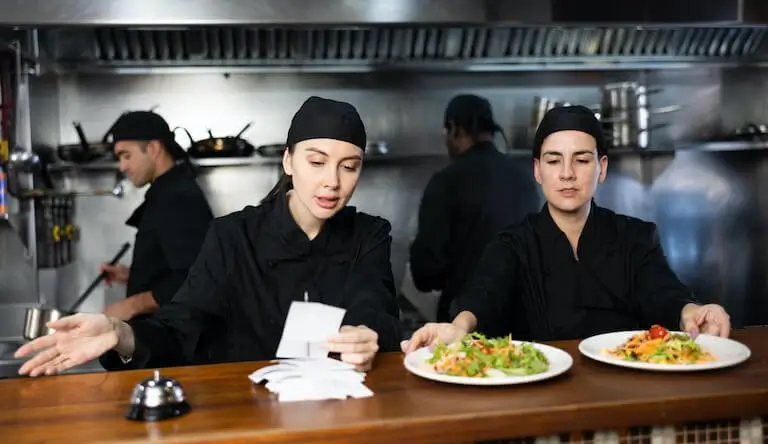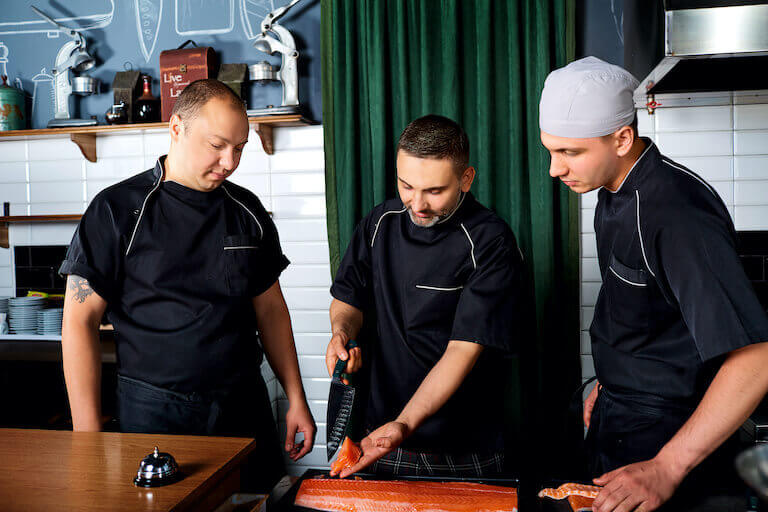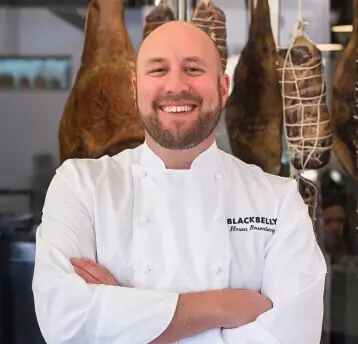Listen to This Article:
While opening a restaurant is often characterized as a deeply risky venture, the truth is that this perception is more myth than reality.
Though restaurant ownership certainly involves significant challenges, the true failure rates are far more manageable than people may think; in fact, recent data show that restaurants are actually more likely to survive their initial years than the average American business.
What separates establishments that thrive from those that struggle usually comes down to preparation, skills, and strategic decision-making—all factors that are within an owner’s control.
Understanding the most common risks that contribute to restaurant failure—and how to avoid them—can help both aspiring and current restaurant owners build thriving, sustainable businesses.
Restaurant Failure Rates: Myth vs. Reality
Data from a Cornell University study published in 2005 provide a good baseline for our understanding of restaurant failure rates in the 21st century. In that study, the researchers examined thousands of health department permits over three years and found that about 26% of new restaurants closed or changed ownership in the first year, with approximately 60% gone by the end of year three.
Interestingly, independent restaurants and franchised chains failed at nearly identical rates—the three-year failure rate was roughly 61% for independents versus 57% for franchises. This finding challenges the common assumption that franchises automatically offer better survival odds.
More recent evidence suggests the industry’s survival rates have actually improved over the past few decades. According to a Bureau of Labor Statistics analysis conducted by the Washington Post, first-year restaurant failures now sit around 14%, and more than half (56%) of new restaurants make it to their fifth year. The restaurant sector’s ten-year survival rate has even been slightly higher than the average across all industries in recent years.
Percentage of Establishments Still in Business by Year from Launch
| Sector | Year 1 | Year 2 | Year 3 | Year 4 | Year 5 | Year 6 | Year 7 | Year 8 | Year 9 | Year 10 |
|---|---|---|---|---|---|---|---|---|---|---|
| Accommodation and food services | 86% | 76% | 68% | 61% | 56% | 51% | 47% | 44% | 41% | 38% |
| Total private sector | 79% | 69% | 62% | 56% | 50% | 46% | 42% | 39% | 37% | 34% |
(source)
The key insight? Restaurants aren’t doomed to fail—but the risk remains significant. However, success often depends on internal factors under an owner’s control rather than external market forces or luck.
*Information may not reflect every student’s experience. Results and outcomes may be based on several factors, such as geographical region or previous experience.
The Most Common Reasons Restaurants Fail
Often it’s not one single mistake, but a combination of missteps in management, finance, operations, and strategy that leads to closure. Here are some of the recurring factors behind restaurant failures.
Poor Leadership and Management
A restaurant’s fate is largely determined by the quality of its management. Inexperienced or poor leadership can manifest as a lack of clear business strategy, disorganized operations, and a reactive “putting out fires” approach to problems.
When owners don’t establish standards and policies, they often end up running the business in a haphazard, “seat-of-the-pants” style. This can lead to inconsistent customer experiences and internal chaos.
Toxic work culture can also develop under poor leadership—unmotivated staff, high turnover, and workplace hostility directly impact service quality and customer satisfaction. A Forbes analysis indicates that poor leadership and toxic internal culture rank among the top reasons restaurants fail.
If management cannot inspire and organize their team or set a coherent vision, the restaurant can become prone to operational breakdowns and reputational damage.

Well-trained, happy employees can help contribute to a restaurant’s success.
Insufficient Capital and Financial Mismanagement
Unsurprisingly, one of the most common reasons restaurants fail is because they simply run out of money. Underestimating capital needs for both startup and ongoing operations can prove fatal. Restaurants face high upfront costs—build-out, equipment, staffing, initial inventory—and typically operate on thin profit margins (often around 5% pre-tax, according to the National Restaurant Association).
A common scenario: owners pour their budget into creating a beautiful venue but leave insufficient cash for day-to-day expenses, marketing, or emergencies. The business becomes insolvent within months.
Poor financial management—not tracking food and labor costs, failing to price menu items profitably, or neglecting budgeting—can erode viability. In Cornell’s report, some failed restaurant owners didn’t even know their daily costs or rely on any performance metrics.
Critical Financial Metrics Every Restaurant Owner Should Track
Having insight into the health of your business can make the difference between success and failure. Key insights you should consider focusing on may include:
- Food cost percentage (should typically be 28-35% of revenue)
- Labor cost percentage (usually 25-35% of revenue)
- Daily cash flow and break-even point
- Average customer check and table turnover rate
If you can’t immediately cite these numbers for your restaurant, you’re essentially operating blind—and can be putting your business at serious risk.
Without financial discipline, even popular restaurants can fail to turn a profit—highlighting the importance of maintaining a cost-conscious culture and rigorous record-keeping from day one.
*Information may not reflect every student’s experience. Results and outcomes may be based on several factors, such as geographical region or previous experience.
Lack of Operational Experience and Training
Owning a restaurant involves a blend of culinary expertise and business savvy. New restaurateurs may lack experience in key areas—some are first-time owners with no background in restaurant operations, while others may be talented chefs unfamiliar with management.
Cornell’s landmark research identified “entrepreneurial incompetence“—an inability to operate professionally or hire competent managers—as a major contributor to failure. Failed owners often admit they didn’t understand what they were getting into on the business side.
Poor hiring and staff training practices can compound these issues. If management doesn’t know how to recruit, train, and retain good employees, service quality suffers and labor costs can soar.
Running a restaurant without the necessary know-how—whether in cooking, service management, or business administration—could contribute to the odds of your business going belly-up.
KEY INSIGHT: The “Passion Trap”
Some aspiring restaurateurs believe that passion for food and hospitality is enough to guarantee success. While passion can be key, it should ideally be paired with concrete skills in areas like cost control, staff management, and operational systems. Successful restaurant owners often combine their love for the industry with rigorous training in both culinary techniques and business fundamentals.
Flawed Concept and Poor Market Fit
A brilliant restaurant idea can still fail if executed in the wrong place or without a clear concept. Location and concept development often represent make-or-break factors.
Poor location choices—spots with low visibility, insufficient parking, or mismatched clientele—can doom even good restaurants. Opening without researching the local market proves equally dangerous: if an area is saturated with similar eateries or lacks demand for the concept, failure becomes likely.
Restaurant concepts must be well-defined and appealing to stand out. Owners who lack clear vision or try to be “everything to everyone” often struggle. Restaurants that continuously change themes or menus confuse customers and dilute their brand.
Concept integrity can erode over time—an ethnic restaurant “watering down” authenticity may lose loyal patrons. Establishments that don’t fit their market face uphill battles to attract and retain customers.
Mediocre Food or Inconsistent Service Quality
The restaurant business centers on delivering exceptional dining experiences. If the product—food and service—is poor, it’s unlikely that any amount of marketing or funding will save the restaurant’s reputation.
Some restaurants fail because their food is forgettable or subpar. In today’s competitive environment, serving average food in crowded market niches practically guarantees failure. Inconsistency can prove equally damaging: if quality swings wildly between visits, patrons won’t return.
Service quality and hospitality matter equally. Even with outstanding food, bad service—slow, rude, or disorganized staff—can drive customers away. And health and sanitation problems can kill a restaurant’s reputation overnight.
Quality remains king in the restaurant world. Establishments that don’t uphold high standards in food preparation, cleanliness, and customer service can quickly earn negative reviews and watch their customer base evaporate.

Ensuring consistent, high-quality service can keep customers coming back.
Insufficient Marketing and Customer Engagement
“If you build it, they will come” doesn’t apply to restaurants. Many new owners underestimate the importance of good marketing and ongoing customer engagement.
Restaurants need more than good food—they need marketing savvy and customer relationship management to achieve sustainable sales volumes. People need to know about your restaurant and have compelling reasons to try it.
Failing to promote effectively—not investing in advertising, social media, or community outreach—particularly around grand openings, can prove costly.
Communication lapses can also create problems. Restaurants that close for renovations without informing loyal customers may lose them permanently—by reopening time, those customers have moved on.
Ignoring feedback or failing to engage with online reviews can hurt your restaurant’s reputation. Modern diners discover and evaluate restaurants via digital platforms; establishments not managing their online presence can easily fall behind competitors.
What Thriving Restaurants Do Differently
That same Cornell report on restaurant performance highlights what separates survivors from failures. Thriving establishments consistently demonstrate:
Clear and documented strategy. Successful operators don’t wing it—they develop comprehensive business plans and stick to them while remaining adaptable.
Managerial flexibility and adaptability. These restaurants pivot when necessary and embrace useful technologies for efficiency.
Emphasis on quality, consistency, and sanitation. They never compromise on food quality or cleanliness standards.
Strong team culture and training. Successful restaurants invest heavily in staff development and maintain positive workplace environments.
Smart use of technology and innovation. They adopt helpful systems for point-of-sale, reservations, and customer engagement.
The takeaway? Performance isn’t luck—it’s built on replicable practices that any restaurant can implement with proper knowledge and commitment.
How Proper Training Can Change Everything
While these restaurant challenges are real, they’re not insurmountable. Many failure factors stem from gaps in skills, knowledge, or planning—precisely what formal culinary arts and restaurant management training aim to address.
Quality culinary education not only offers training in cooking techniques, but also in the business principles that can help food enterprises grow and thrive. Here’s how proper training can counteract common failure causes:
Business Education and Financial Acumen
Culinary business programs can teach restaurant entrepreneurship fundamentals—writing business plans, conducting market research, choosing appropriate locations, and developing viable concepts. Students have the opportunity to practice formulating clear strategies from the outset, avoiding the “lack of documented strategy” trap plaguing many failed restaurants.
At Escoffier, courses in accounting and finance form part of many programs’ curricula. This can help aspiring restaurateurs understand budgeting, cost control, and financial forecasting. They can explore calculating food costs, pricing menu items profitably, managing cash flow, and maintaining proper records—skills that can help avoid capital and financial mismanagement issues.
Formal training can contribute to a cost-conscious, strategic mindset that keeps businesses on sound financial footing.
*Information may not reflect every student’s experience. Results and outcomes may be based on several factors, such as geographical region or previous experience.
Leadership and Management Skills
Culinary programs may also emphasize restaurant operations management, covering inventory control, scheduling, procurement, and quality assurance. Students in these programs may explore human resources and leadership—how to hire effectively, train staff, and create positive workplace cultures.
This type of training can help stave off leadership and culture-related failures. Research has suggested that establishments with well-trained managers and staff can deliver a higher quality of service. Through training, future operators practice setting service standards, implementing standard operating procedures, and responding to problems proactively rather than constantly “putting out fires.”
Students may also develop soft skills like communication, teamwork, and conflict resolution—crucial for maintaining healthy team cultures. Trained managers can help build organized, motivated staff and avoid toxic culture or turnover issues that can sink restaurants.
Chef Gavin Keysen talks about hiring for kindness when bringing in new staff members.
*Information may not reflect every student’s experience. Results and outcomes may be based on several factors, such as geographical region or previous experience.
Culinary and Service Excellence
Of course, culinary school has a focus on developing high-level cooking skills and menu planning expertise. Chefs and owners with rigorous culinary training can come away from their education better equipped to deliver exceptional and consistent food quality, avoiding “forgettable food” syndrome.
At Escoffier, students can practice traditional techniques, flavor balancing, and food safety—helping ensure their restaurant kitchens can produce outstanding dishes reliably while meeting health standards.
Well-trained teams uphold operational standards as well, maintaining high cleanliness and service quality. According to recent research, there is a correlation between employee training and better safety/hygiene practices, which can contribute to improved customer satisfaction and loyalty.
Training translates into tangible performance improvements—fewer mistakes, happier customers, better reviews—increasing restaurants’ odds of thriving.

Kitchen staff trained in proper techniques can help restaurants deliver quality food consistently.
Adaptability and Innovation
A less obvious benefit of a culinary education is exposure to industry trends and best practices. Escoffier’s programs feature experienced industry professionals, incorporate real-world experience through externships, and can help students understand how to analyze changing market conditions.
This can help graduates stay nimble and innovative. They can be more likely to adopt useful technologies and adapt business models when needed. Indeed, according to the National Restaurant Association’s 2024 Restaurant Technology Landscape Report, 73% of businesses achieved higher operational productivity and efficiency than before the pandemic thanks to investments in technology.
By developing this mindset during school, future restaurateurs may emerge better prepared to pivot and make data-driven decisions when challenges arise—adjusting menus in response to food cost inflation or launching delivery services to meet customer demand.
Training encourages continuous improvement attitudes—graduates may understand that ongoing learning is part of running thriving restaurants. This adaptability can be lifesaving when external factors change, enabling businesses to weather storms that might sink less-prepared competitors.
Networking and Mentorship
Attending a reputable culinary school can also plug entrepreneurs into networks of industry contacts and mentors. Chef Instructors with real-world experience can provide guidance on common pitfalls and avoidance strategies. Fellow students and alumni may form peer networks sharing insights or becoming business partners.
This social capital can prove invaluable—instead of going alone, new restaurant owners with formal training can reach out to mentors for advice on things like lease negotiations, marketing improvements, or operations troubleshooting. Such support can potentially prevent costly mistakes.
In this way, formal training can provide a safety net of knowledge and support that drastically reduces the trial-and-error that inexperienced owners face.
The Training Investment Decision
Consider this: The average cost of starting a restaurant is close to $400,000—a substantial amount to put at risk without a strong foundation. Compare that to the cost of comprehensive culinary and business training, which can provide the skills to avoid most common failure causes. For serious restaurant entrepreneurs, education isn’t an expense—it’s insurance against preventable mistakes that could cost everything.
Proper Training Can Help Restaurants Thrive
The difference between establishments that thrive and those that struggle typically comes down to controllable factors like leadership quality, financial management, operational competence, and service excellence.
Most importantly, these capabilities can be developed through proper preparation and training. Quality culinary and hospitality management education can directly address the skills gaps that often lead to restaurant failure, from business planning and cost control to culinary excellence and team leadership.
If you’re interested in how culinary school could help you build the foundation for restaurant success, explore Auguste Escoffier School of Culinary Arts’ programs. Some curricula can combine culinary artistry with key business training, helping entrepreneurs gain the comprehensive skills needed to avoid common pitfalls and create thriving food businesses.




